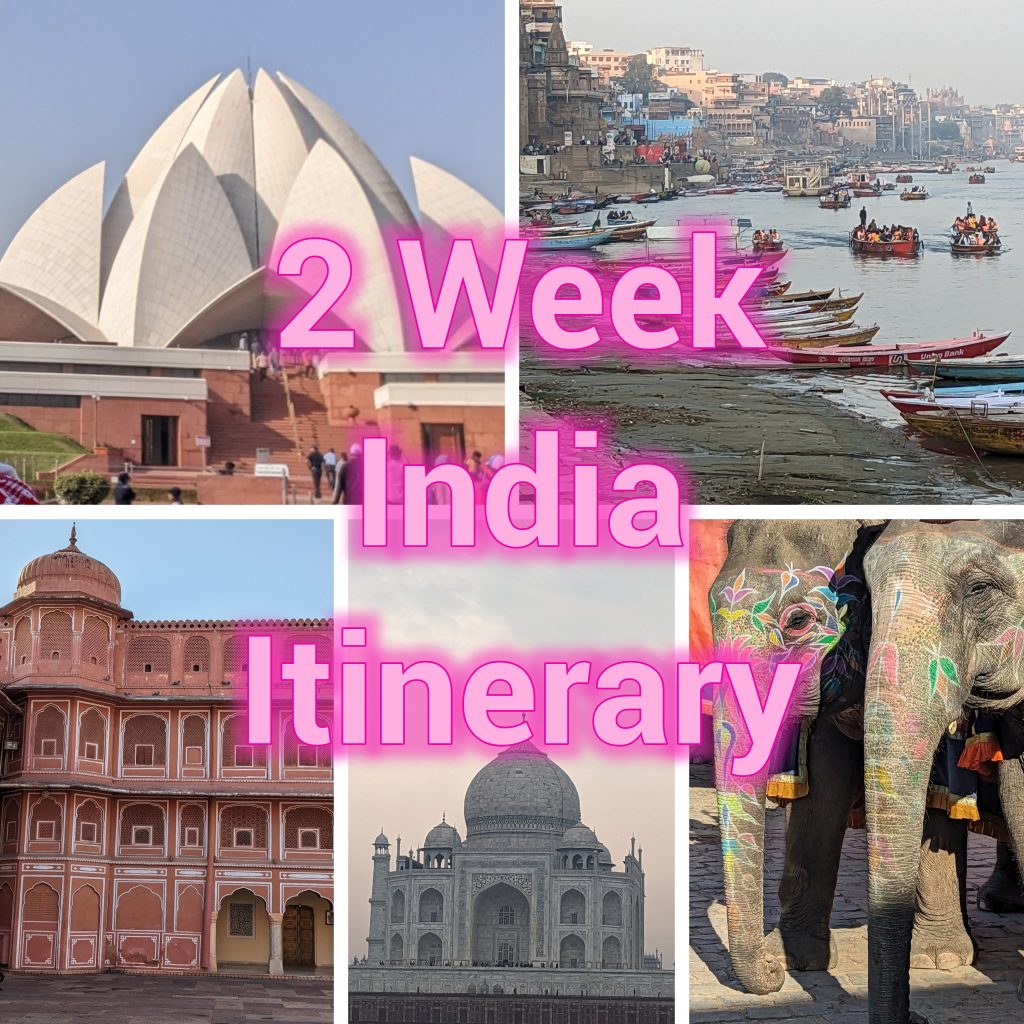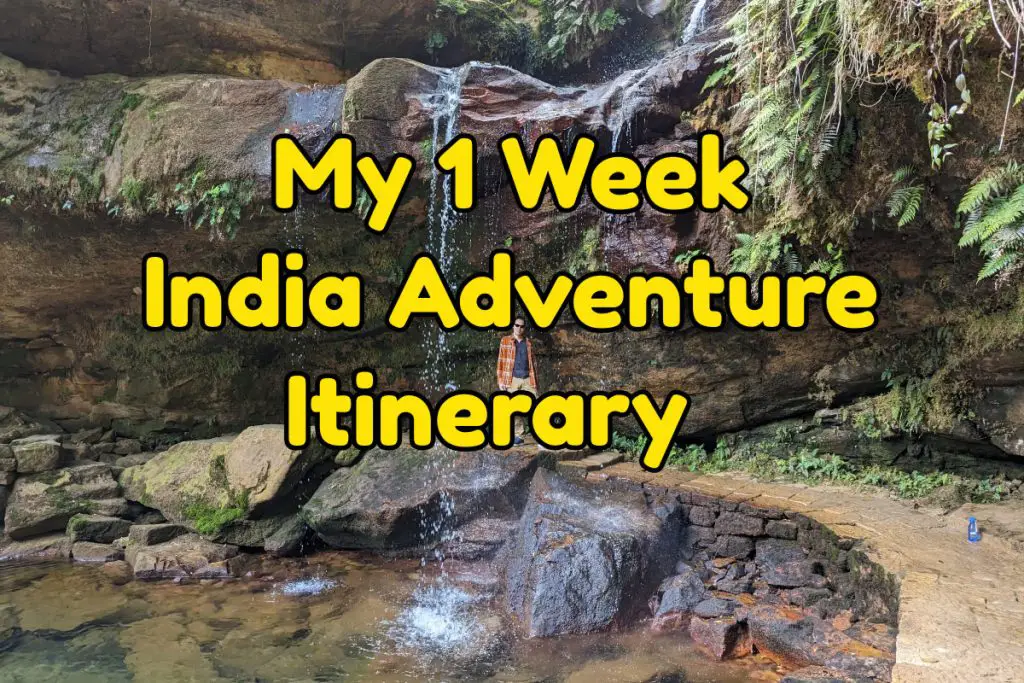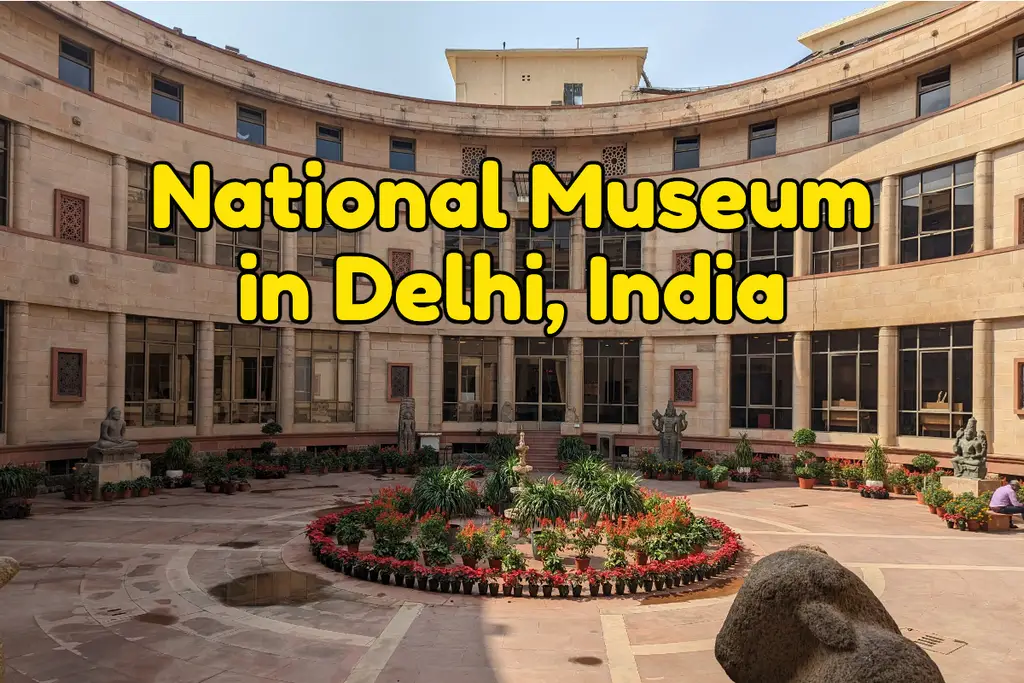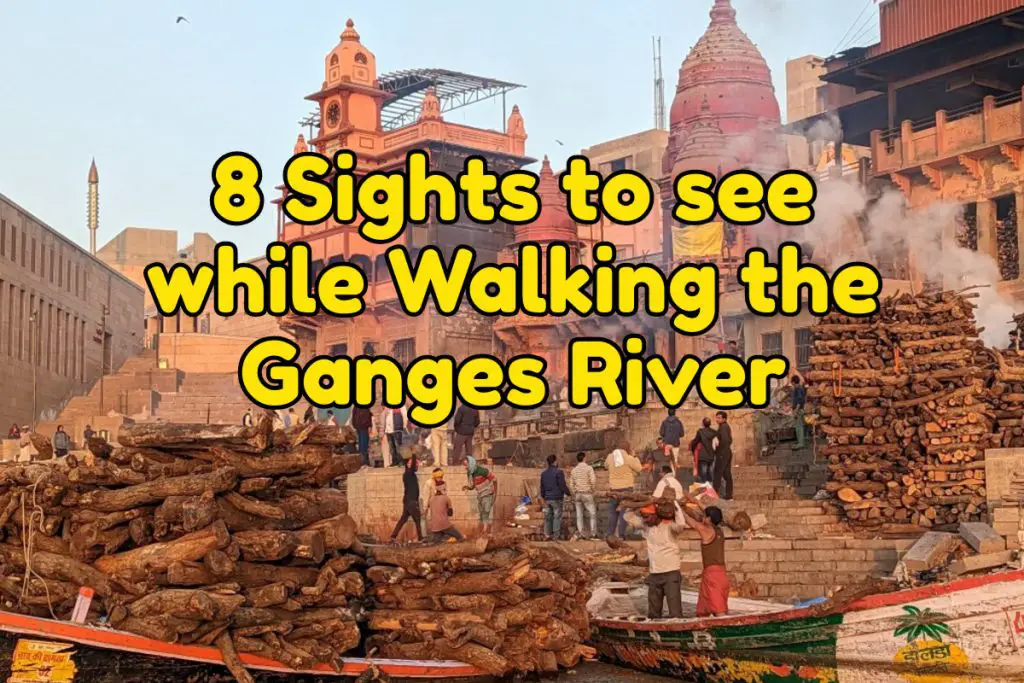
The Ganges River is where the action is in Varanasi, India. It is the ultimate pilgrimage location for Hindus. Happily, walking along the river through the many Ghats was a mostly peaceful activity compared to the rest of India. You see…. Hindu people go to Varanasi to die – I’ll explain later. So the bulk of the activities near the water are associated with religious and personal activities, meaning that as a tourist I was rarely approached other than simple beggars or the boat guys. Just walking along the Varanasi River there was a lot to see and take in, from the buildings to bathers let me walk you through the sights along the Varanasi River.
Where is Varanasi: Uttar Pradesh, India
How to get there: Fly or drive to Varanasi
Who would like Varanasi?: People who enjoy experiencing cultures, People who like walking and sunsets, Yoga people.
Who should avoid Varanasi?: People who are afraid of water, people who want a nightlife, people who hate vegetables, People who are afraid of death.
Why is the Ganges River at Varanasi Important?
First, you must understand the symbology of the Varanasi Ganges River and a bit about the Hindu interpretation of the Buddhist religion. Walking along the Ganges River, you can see many different religious activities going on as well as temples and shrines along the route. People are generally there for prayer, bathing in the river or to die.
Bathing in the Ganges River is important to the Hindu religion because they believe that washing themselves in the Ganges frees them of sins. In fact, Hindus say that a single drop of water from the Ganges – even carried by wind, can cleanse a person of a lifetime of sins. Some people fill small bottles of the Ganges River water to bring back to relatives and loved ones.
Why is Varanasi the place to die?
In Hinduism, people believe that we are all reincarnated after we die as different creatures of Earth. However, we can break the cycle of rebirth and attain salvation if our bodies are burned at Varanasi and our ashes are spread into the Ganges River.
Many believers come to Varanasi when they are approaching the end of their lives and they live in Varanasi until they pass away. Their hope is that their bodies are burned in a funeral pyre along the Ganges and that their ashes are swept into the Ganges River – preventing them from being reincarnated, increasing their karma and ending the cycle of rebirth.
Some of them live in Varanasi for months or years prior to their death and some are brought to Varanasi after they have already died. Most hope that their family will come and watch their bodies be burned in quiet mourning on the sides of the Ganges River.
Things to see as a tourist on the Ganges River in Varanasi
As you walk along the Ganges River, there is so much to see but also so much that can be ignored. The vast majority of people going to Varanasi are there for themselves and are not putting on a show for tourists. Below are a set of Common sites along the River that you should pay attention to.
1. Pyres of smoke – Bodies burning
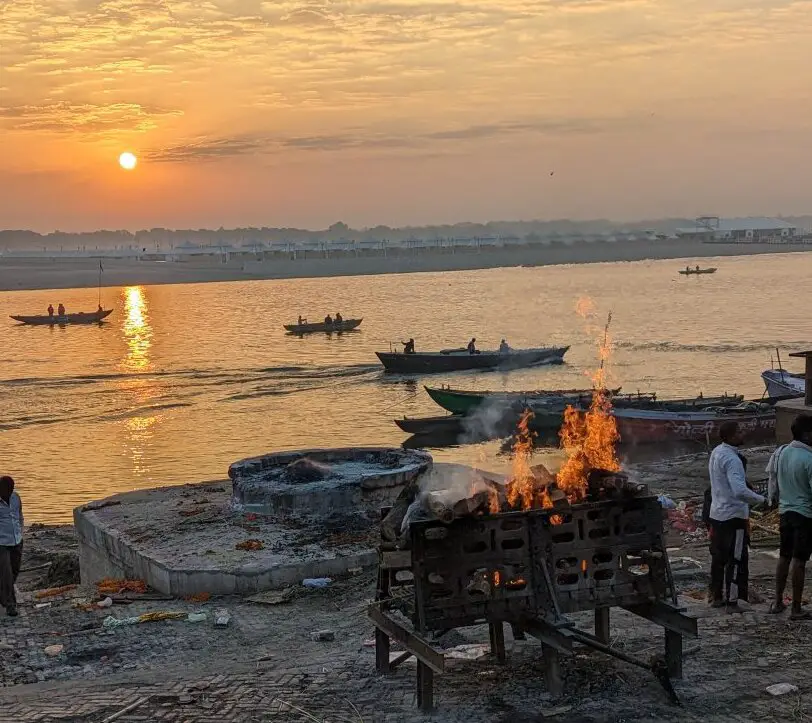
- Those giant billowing piles of wood that are emitting smoke along the Ganges – that is where family and friends are burning the bodies of their loved ones. Yes, that’s right. I can say for sure that I have breathed in the ashes of the dead simply by walking along the Ganges River.
- People organize wood into a rough box shape that holds the body, then light it on fire and watch for hours as it continues to burn for hours until there is only a little ash left on the path. The few remaining ashes are swept into the Ganges River.
2. The Many Ghats of the Ganges River
- There are actually many Ghats – which appear as staircases down into the Ganges River. Each Ghat serves a different purpose and some Ghats are meeting spots for a certain community of people. Either way, each has its own charms and its own events.
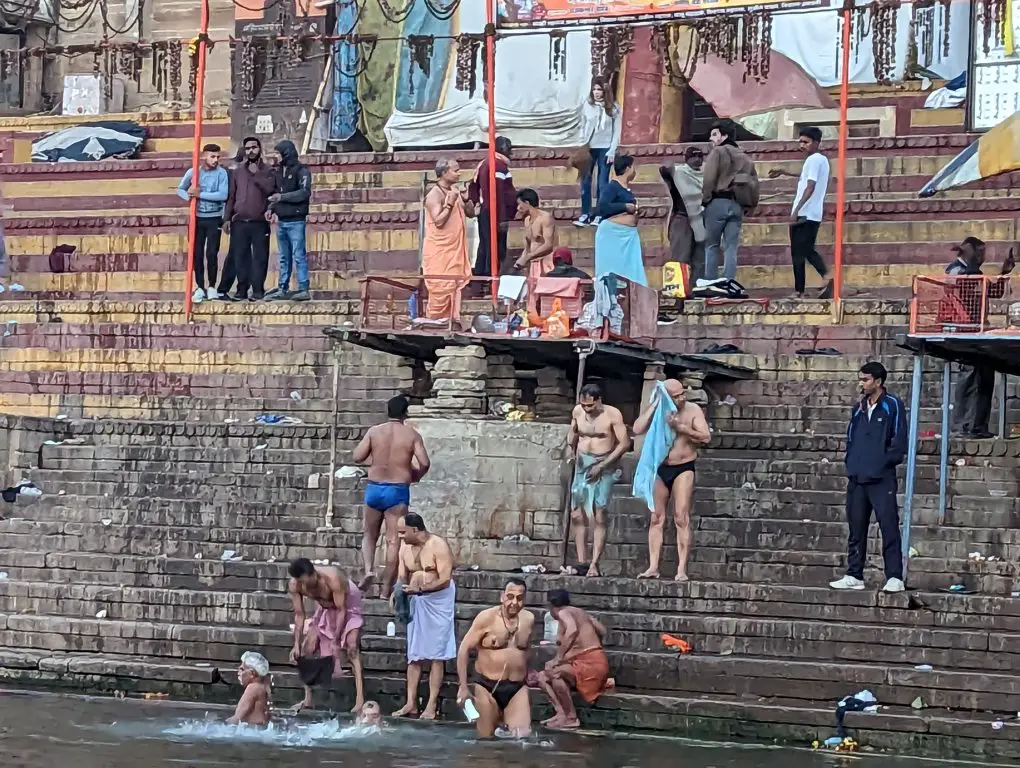
3. A boat ride down the Ganges
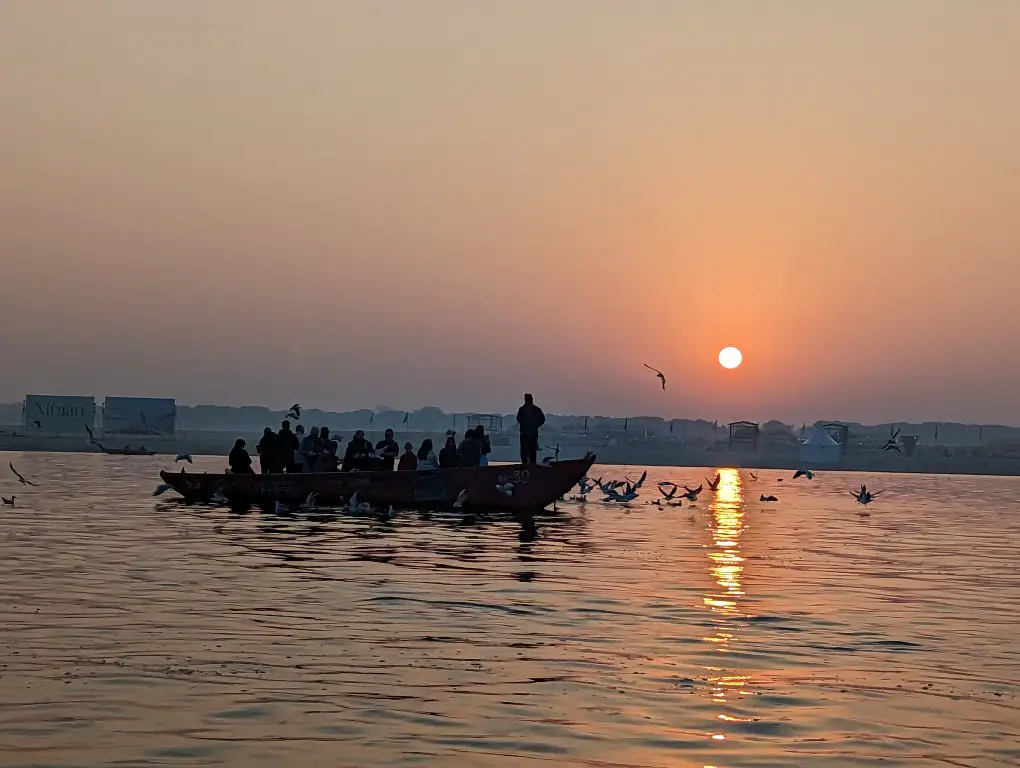
- As you walk along the river, there will be only a few people who will approach you asking you for something, but when they do, they will ask you if you want a boat! We took a boat on the river in the early morning where the sun fully didn’t rise above the clouds/pollution for quite a while! From the perspective of the water we were better able to take in everything that was happening on the banks of the Ganges River.
4. Evening Prayer – At Ganges Aarti
- Every evening at 7 pm, there is an evening prayer ceremony that is a huge event – larger than any music concert I’ve ever been to which attracts a gigantic crowd of people. The prayer traditions is something to experience and I will go into the details in a separate post

5. People Bathing in the Ganges River
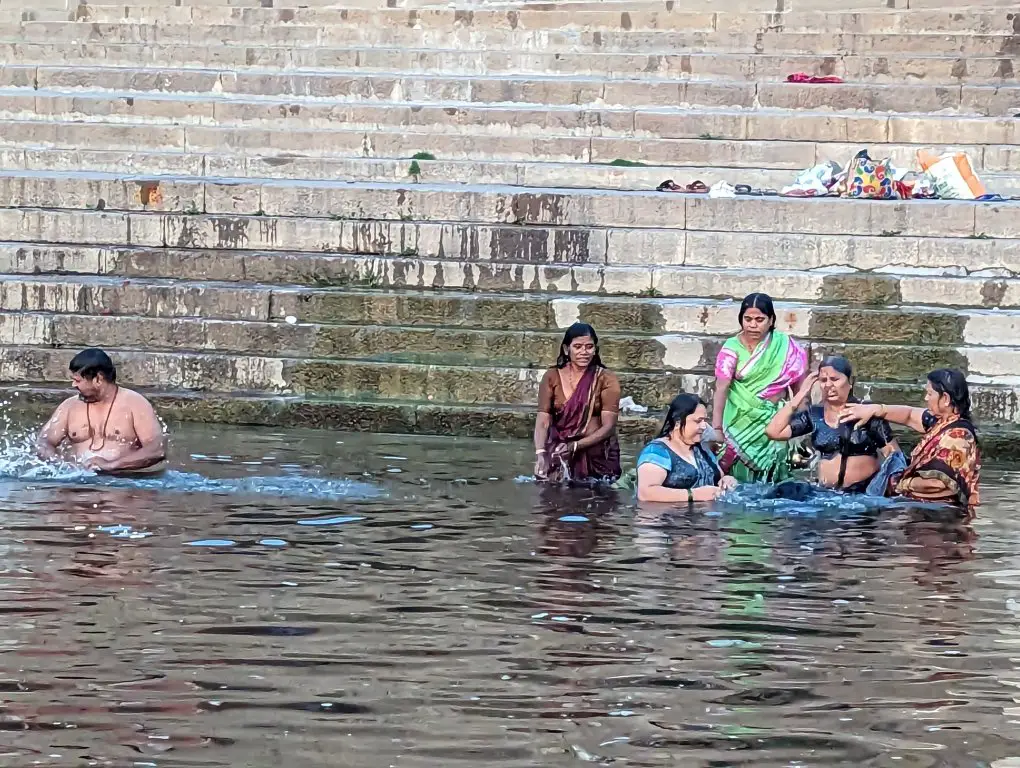
- OK. Hold up. First of all the Ganges River is… disgusting. It is often compared to sewage water, like in this study. However, it is believed that by washing yourself in the Ganges River you will be freeing yourself from sin and most often we saw the most people jumping into the river in the morning with small groups. They believe it washes away their sins and we must respect that.
6. Beggars / Blessing Givers
- Along the river a few people will have colored paint and while sitting comfortably await someone to approach them with a can nearby asking for donations.
7. White Powder People?
- These people are holy.
- When they are covered in the white powder, they are actually covered by real human ashes and they decorate themselves with a cloth hat on their head, a decorative towel around their waist and walk barefooted holding a tray of fire.
- Understanding that they are covered in human remains is important to appreciate the culture around you.
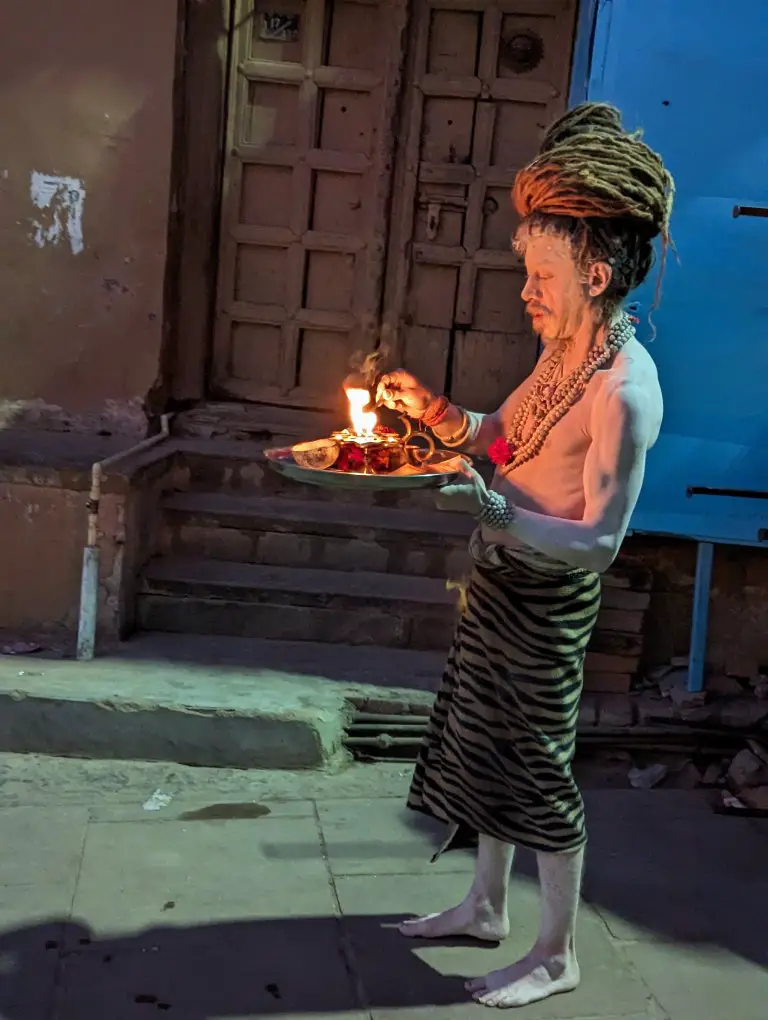
8. Thin Streets
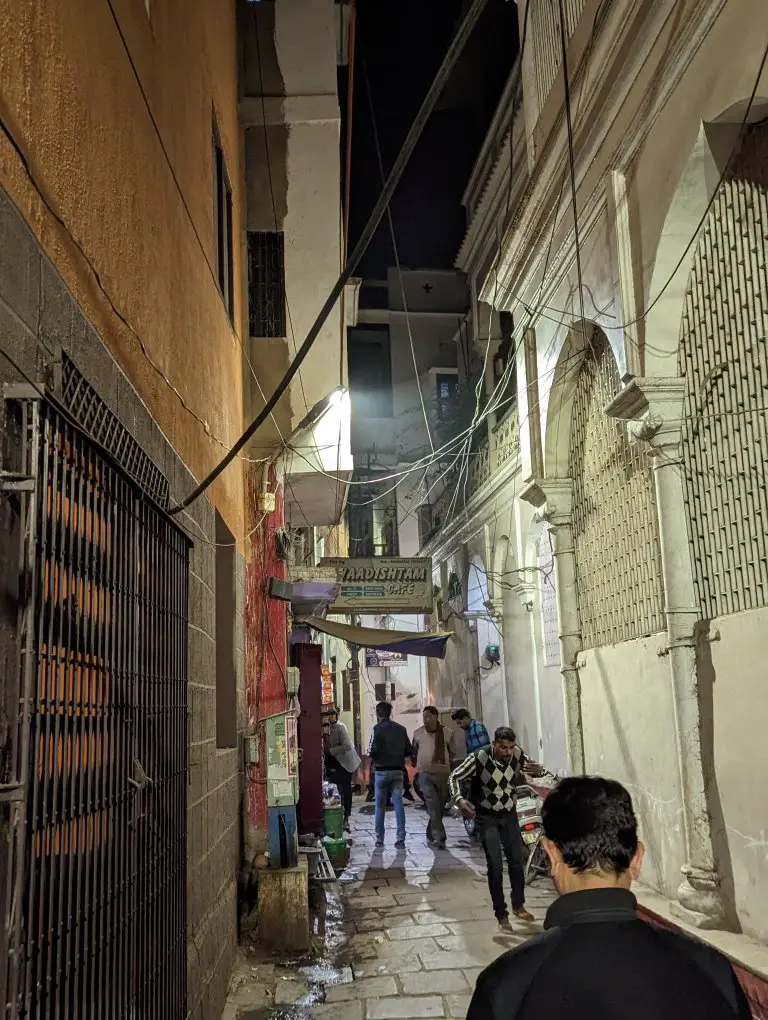
- My experience walking through Varanasi to the Ghats was filled with very thin streets. Those streets have been there for centuries before the car was invented and will be for centuries after. However it can make it difficult to navigate when motorcycles are going through them, or a tiny rickshaw.
This short list of 8 most commonly seen sights seen while walking along the Ganges River in Varanasi will help you to get acquainted with the culture of the town and to have a better understanding of what is going on around you as you appreciate the pilgrimage site of the Ganges River.

